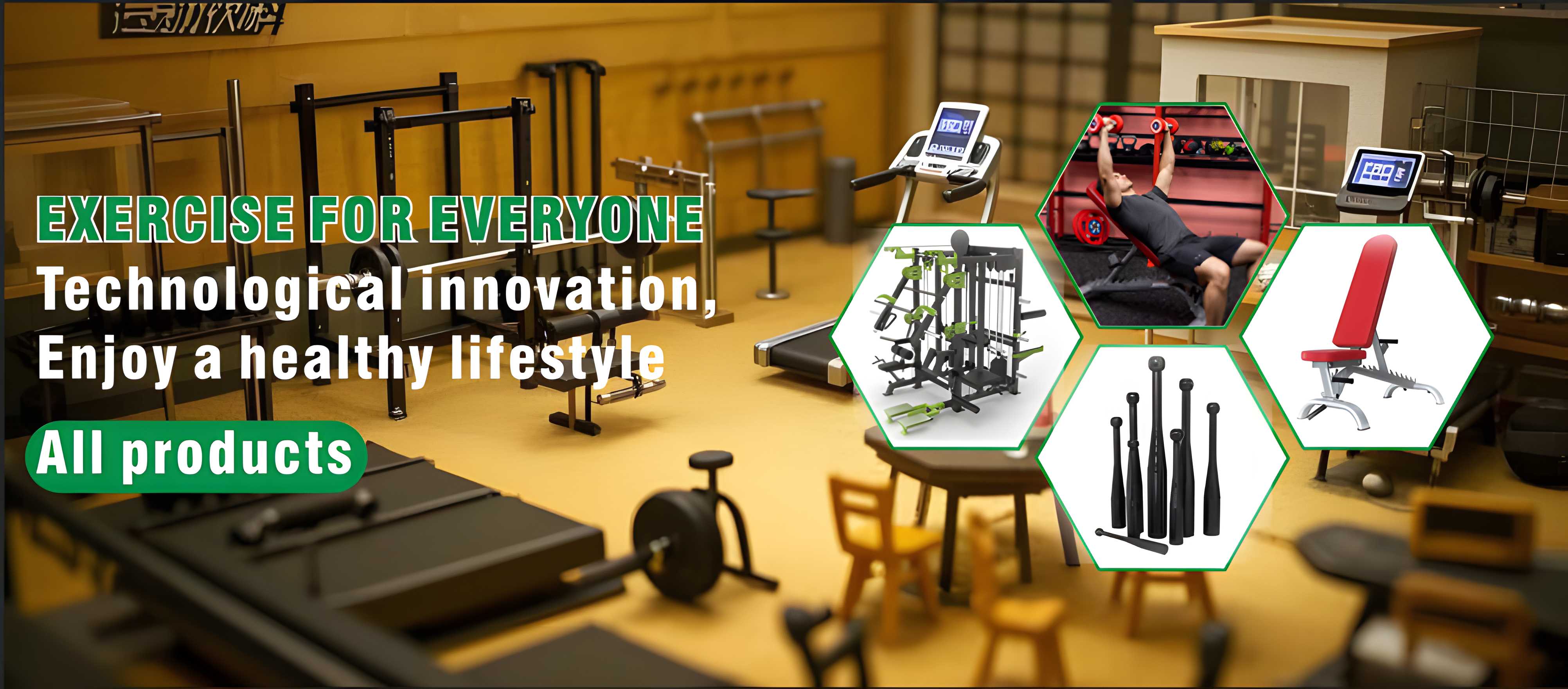Types of Squat Racks for Different Training Goals
Power Racks: Stability for Heavy Lifting
Power racks are indispensable for serious lifters prioritizing stability and safety during heavy lifting sessions. They are designed with four sturdy posts, adjustable safety bars, and multiple attachment points, allowing for a wide range of exercises. A power rack enables a full range of motion, making it ideal for squats, bench presses, and deadlifts. [REP Fitness PR-5000](#) is frequently mentioned among fitness enthusiasts due to its customization options and compatibility with various attachments. Fitness experts often label power racks as one of the best gym equipment choices for strength training and muscle building.
Half Racks: Space-Efficient Strength Training
Half racks are a great space-saving alternative to power racks, offering similar stability while occupying less floor space. This makes them perfect for smaller home gyms. These racks come with adjustable safety arms and support multiple exercises, from squats to overhead presses. For moderate lifters seeking quality without the bulk, half racks, such as the [Bells of Steel Hydra Half Rack](#), provide an excellent balance of functionality and space efficiency. Many fitness professionals recommend them for gyms that need versatile equipment with minimal spatial footprint.
Foldable Squat Racks for Compact Home Gyms
With limited space often being a constraint in home gyms, foldable squat racks offer a practical solution. They allow effortless setup and storage, thanks to their collapsible designs that can be mounted on walls and folded when not in use. Despite their compact nature, these racks maintain the functionalities of traditional squat racks and add an element of portability, making them ideal for home workouts. Reviews often highlight foldable squat racks, like the [PRx Profile One Rack](#), as some of the best gym equipment for weight loss due to their efficiency in space management.
Squat Stands: Minimalist Design for Olympic Lifts
Squat stands provide a minimalist yet effective setup for performing Olympic lifts such as squats and presses. They are generally lighter and more portable than racks, suiting dynamic routines that demand frequent adjustments. While squat stands lack the comprehensive safety features of full racks, they are preferred by athletes who value mobility and have limited workout space. The [Rogue Fitness S-2 Squat Stand](#) is highly favored by those pursuing Olympic-style lifts while maximizing floor space. These stands remain a practical option for athletes aiming to explore the minimalist gym equipment route.
Essential Features for Maximum Performance
Weight Capacity and Steel Gauge Requirements
A crucial aspect of squat racks is understanding their weight capacity as it dictates how much load they can safely hold during workouts. Weight capacity reflects the robustness and durability of the rack and assures safety, especially when performing lifts such as squats and bench presses. Additionally, the steel gauge of a squat rack significantly contributes to its durability. For instance, a lower steel gauge number, such as 11-gauge, indicates thicker and stronger materials as opposed to a higher gauge like 14-gauge. According to various fitness experts, higher steel gauges can experience quicker wear and tear, potentially making them less ideal for heavy users. Therefore, selecting a squat rack with adequate weight capacity and the right steel gauge is paramount for achieving maximum performance in strength training.
Westside vs. Standard Hole Spacing Explained
Choosing between Westside and standard hole spacing on squat racks can affect your training experience significantly. Westside hole spacing offers optimal adjustability, making it essential for varied exercises and accommodating different user heights. This precision allows lifters to set up safety pins or J-Cups in exact positions, enhancing workout effectiveness and safety. In contrast, standard hole spacing is a more cost-effective option, although it limits flexibility in exercise adjustments. Many fitness experts recommend Westside spacing for serious lifters seeking to maximize performance, as it influences workout variations and safety during training. Thus, understanding the benefits of each hole spacing type helps in making an informed choice based on training needs and budget constraints.
Adjustable Safety Arms and J-Cup Options
Adjustable safety arms and J-Cup options are vital features for enhancing the squat rack's safety and adaptability. Safety arms protect lifters during heavy lifts by catching the bar if it slips, allowing confident exercise performance. The adjustability of these arms ensures better positioning aligned with the lifter's height and preferences, which aids in preventing injuries. Similarly, J-Cups support bar placement on the rack, and having multiple settings can enhance convenience during workouts. Modern squat racks increasingly include adjustable safety arms and J-Cups, making customization of safety settings easier, thus improving user safety. Fitness reviews emphasize these features as critical for preventing injuries and boosting workout adaptability.
Pull-Up Bar Integration for Versatility
Integrating a pull-up bar into squat racks significantly increases their versatility, enabling users to perform a range of upper body workouts alongside weight training. The inclusion of a pull-up bar allows for space-efficient multi-functional exercises, turning the squat rack into a comprehensive workout station. Expert opinions suggest that squat racks with pull-up bars provide an all-in-one workout solution, reducing the need for additional equipment. This dual functionality is appreciated by many users, as it maximizes gym space and expands workout opportunities. Therefore, opting for a squat rack with pull-up bar integration is a smart choice for those seeking to enhance exercise variety and efficiency.
Space Optimization for Home Gym Setups
Ceiling Height Requirements for Full-Range Movements
Ceiling height is a critical factor in determining the suitability of a squat rack for home gyms, particularly for ensuring safety and accommodating full-range movements. For exercises like squats, overhead presses, and pull-ups, ample vertical space is a necessity. Without sufficient height, you risk hitting the ceiling with the barbell or your head during pull-ups. Fitness experts recommend measuring your height and adding a few extra feet to ensure comfort and prevent accidents during lifts. Ensuring that your home gym accommodates these movements not only enhances safety but also maximizes the effectiveness of your workouts.
Footprint vs. Functional Training Area
When setting up a home gym, it's essential to understand the squat rack's footprint and how it compares to the functional training area you'll need. A rack with a compact footprint can offer more flexibility in your workout layout, allowing you to make the best use of limited space. Conversely, a larger training area can accommodate more comprehensive exercises, providing a robust workout experience. Experts highlight the importance of effectively mapping out your gym space to optimize equipment placement and ensure user safety. Balancing the squat rack's size with your overall training needs is key to a functional home gym design.
Wall-Mounted vs. Freestanding Stability Considerations
Choosing between wall-mounted and freestanding squat racks depends on space availability and personal preference, with each option having its pros and cons. Wall-mounted racks are great for saving space but require solid anchoring for stability and safety during lifts. They are ideal if your workout area is limited. In contrast, freestanding racks offer mobility and adaptability, which can be advantageous for those who need versatile configurations. User reviews suggest that the decision should align with your specific spatial constraints and workout requirements. Ultimately, both rack types provide unique advantages for home gym setups.
Safety Standards for Solo Lifters
Pin Pipe Safeties vs. Straps: Impact Protection
Choosing the right safety system for your squat rack is crucial for minimizing the risk of injuries. Pin pipe safeties are designed to provide a solid stop for falling weights, making them ideal for heavy lifts where abrupt halts are necessary. On the other hand, safety straps, offer more flexibility as they can better absorb shock, which is beneficial during lighter weight or dynamic lifts that might exert sudden force. Deciding between these systems should take into account your lifting style and the typical weights you're handling. Fitness guidelines strongly recommend understanding these options to choose appropriately, thus ensuring optimal injury prevention during workouts.
Base Design and Anti-Tip Features
The base design of a squat rack is integral to its overall stability, a factor that becomes especially important for heavier lifts. A solid and well-designed base ensures that the rack remains stable, preventing accidental tipping that could lead to dangerous situations. Additionally, anti-tip features are crucial for enhancing safety, ensuring that even during intense workouts, the equipment remains secure. Expert reviews consistently highlight the importance of these stability features, especially for solo lifters who rely solely on the equipment to safeguard against mishaps. Ensuring that your squat rack has these features can significantly sustain optimal and secure training conditions.
Knurling Quality for Secure Grip During PR Attempts
Knurling quality on the barbell is vital for ensuring a secure grip, especially during personal record (PR) attempts where control is paramount. When the stakes are high, good knurling prevents slippage, enabling you to focus on the lift instead of worrying about losing grip. Fitness professionals frequently emphasize that investing in barbells with excellent knurling not only enhances lifting performance but also boosts confidence during heavy lifts. This focus on grip security ensures that every lift is as safe and successful as possible, allowing you to concentrate on pushing your limits without the fear of an accident.
Balancing Budget and Commercial-Grade Quality
11-Gauge vs. 14-Gauge Steel Cost Analysis
When selecting a squat rack, understanding the differences between 11-gauge and 14-gauge steel is crucial as it significantly impacts both cost and durability. Generally, 11-gauge steel, which is thicker, tends to be more robust and durable, making it a favorite choice for serious lifters willing to invest more upfront. Although initially pricier, opting for 11-gauge steel is often cost-effective in the long run due to its ability to withstand rigorous use without the need for frequent replacements. On the other hand, 14-gauge steel, while cheaper, may require earlier replacement under heavy use, potentially offsetting early savings. Thus, a thorough cost analysis and understanding of one's lifting needs can guide better purchasing decisions.
Warranty Length as a Durability Indicator
The warranty length offered by a manufacturer can serve as a reliable indicator of a product's durability and the brand's confidence in its offering. Typically, a longer warranty signifies the manufacturer's assurance in the equipment's longevity and resilience under regular use. For buyers looking to make a long-term investment in gym equipment, evaluating warranty terms is essential. Industry standards often reveal that reputable brands align warranty periods with the expected performance of their products. By considering warranty length, prospective buyers can gauge not only the expected lifespan of their equipment but also the level of support they can anticipate from the manufacturer in case of defects or issues.
Compatibility with Aftermarket Accessories
It's also important to evaluate the compatibility of squat racks with aftermarket accessories, as this can significantly enhance a rack's versatility and extend its functional life. Many brands offer a range of additional attachments like dip bars, landmine attachments, and weight storage solutions that can transform a basic squat rack into a multi-functional workout station. Opting for a squat rack with high compatibility allows users to expand their training regimen over time without the need for entirely new equipment, thus making the initial purchase more valuable. Reviewing compatibility charts or consulting with sellers about your current and future needs can help secure a more versatile and cost-effective gym setup over time.

 EN
EN







































